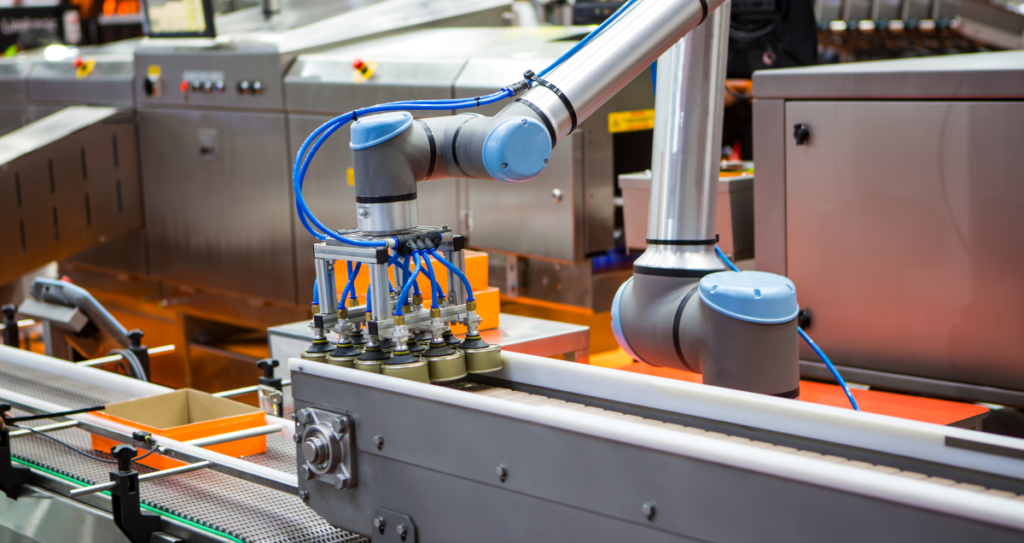Innovative technologies have brought about considerable changes in the construction industry. Significant progress has been made in recent years, by increasing productivity and efficiency in the past years. Innovative developments, such as drone technology and 3D printing, are completely changing the construction industry. We will look at five of the most exciting new technologies that are changing the world of construction industry.
3D Printing

Building technology has been completely transformed by additive manufacturing or 3D printing. It allows for the printing of complex shapes and structures from various materials like concrete and plastic in a fraction of the time it would take using traditional methods. Not only is 3D printing economical, but it is also productive, particularly when it comes to creating prototypes and modifications.
One of the ways 3D printing is revolutionizing construction is by enabling the fabrication of affordable, energy-efficient, and sustainable homes. Several startups in the USA and Europe have demonstrated the use of 3D printing to build homes in a fraction of the time it would take using traditional methods.
Furthermore, 3D printing is changing the way building component creation, customization, and modification are done by construction organizations. It makes it possible to design, prototype, and test complex shapes and components more quickly and accurately. Many firms are already using 3D printing to create prefabricated building components like structural beams and columns, which can be quickly assembled onsite with minimal effort.
Additionally, this innovative technology has completely changed the repair and maintenance method on existing structures. It enables them to scan and model existing structures accurately, identify areas needing repair or maintenance, and create customized parts and components for efficient repairs. This technology provides an economical solution by enhancing existing structures without causing any costly demolition and reconstruction.
Robotics the Innovative Technology

Robotics plays a major role in changing the construction industry. Technological advancements have made the robotic operation of construction equipment faster, smarter, and more effective. Buildings, bridges, roads, and other infrastructure projects are constructed more quickly and accurately with the help of robotics, which also lowers the demand for manual labor.
Every step of the building process, including excavation, grading, concrete pouring, welding, and wall construction, can be automated by robots. They can measure and move materials accurately and smoothly, resulting in cost reduction and increased productivity. Moreover, robotics technology improves safety on construction sites by lowering the risk for human workers to perform hazardous tasks.
Robots also contribute to the automated creation of 3D objects. Additive robotic manufacturing, or 3D printing, enables the construction of large infrastructure components in a fraction of the time. Bridges and other structures can be quickly built with exceptional accuracy and at a lower cost compared to traditional methods. Additionally, robotics is used for automated excavation, reducing the need for human labor and improving efficiency.
Furthermore, robotics is employed in constructing energy production plants, including nuclear and renewable energy projects. Robots can swiftly construct, inspect, and maintain the machinery required for these operations. This innovative technology has played a crucial role in inspecting energy production plants, detecting flaws and imperfections, and assisting with onsite maintenance and repairs.
Robotics revolutionizes the construction industry by enhancing accuracy, boosting productivity, and reducing costs. It also increases safety on construction sites, reduces the requirement of manpower, and enables the construction of large and complex structures safely and efficiently.
Virtual Reality

Virtual Reality (VR) is one of the most promising and innovative technologies in transforming the construction industry. It provides the next level of vision in the era of construction. Professionals can use it to see construction projects in three dimensions, which helps them examine possible problems and find solutions in the planning stage. This technology reduces costs, improves design accuracy, and shortens project completion time.
VR technology enables construction professionals to easily visualize different project designs and make adjustments as needed. With the help of this virtual “walk-through” experience, engineers and architects may examine the project from several angles and see any potential problems with the design. Additionally, VR can simulate the conditions of a building site, enabling quick detection of any possible problems with stability, weather effects, wind patterns, and other factors.
Construction professionals benefit from VR’s ability to display complex data in a user-friendly format. By simulating construction projects, engineers and architects gain valuable insights into project progress and can make adjustments in real time. This technology also allows for immediate feedback during construction, facilitating quick course corrections if needed.
Moreover, VR has proven to be especially beneficial for training and educating construction professionals. By offering an immersive and interactive learning environment, VR technology prepares new construction workers by familiarizing them with the construction environment before they begin their projects.
Augmented Reality
Augmented Reality (AR) has completely transformed the way of visualizing, designing, and constructing a project. This innovative technology has been used by builders and contractors. AR technology enables improved collaboration among stakeholders, making project communication more efficient and effective.
Construction Experian to better understand complicated blueprints and plans by superimposing digital data onto the real world through the use of augmented reality (AR). Decision-making and problem-solving are improved as a result of stakeholders’ ability to see how various components will work together in real-time.
With AR, builders and contractors can accurately visualize the finished project before construction begins. With the use of this technology, the planned layout can be virtually executed over the existing site, providing accurate positioning of building elements and minimizing mistakes made during construction.
AR also enhances on-site safety by providing real-time information and warning to provide a better working environment, construction workers can wear AR-enabled gadgets to receive instructions, safety guidelines, and alerts.
Drone Technology

Drones are the new innovative technology that the construction industry uses to monitor job sites, gather site data, and take overhead photos. Construction workers inspect finished work, check for problems, and find a better result of the progress of the project with the help of drone technology.
Unmanned aerial vehicles (UAVs) are equipped with high-resolution cameras that allow construction professionals to capture in-depth job site imagery from any direction and altitude. This allows for much more precise data collection than traditional methods. Additionally, the capability to capture multiple angles of a structure with a single flight means that data can be gathered much faster and with less effort.
Using software installed on the drone, construction professionals can measure and monitor the progress of a project, and identify possible issues with the help of software put on the drone. Furthermore, by using drones to produce 3D models of the project site, a thorough perspective of the area that cannot be constructed using conventional means is made possible. So, using this innovative technology to survey a site is a safe and effective solution.
Conclusion
In conclusion, these innovative technologies have brought significant advancements to the construction industry. 3D printing, robotics, virtual reality, and augmented reality have completely changed how we build. These technologies have brought improved accuracy, cost savings, and enhanced safety conditions, and their impact is expected to grow as they become more widespread. The construction industry’s future will certainly be shaped by its adoption of these advances.


